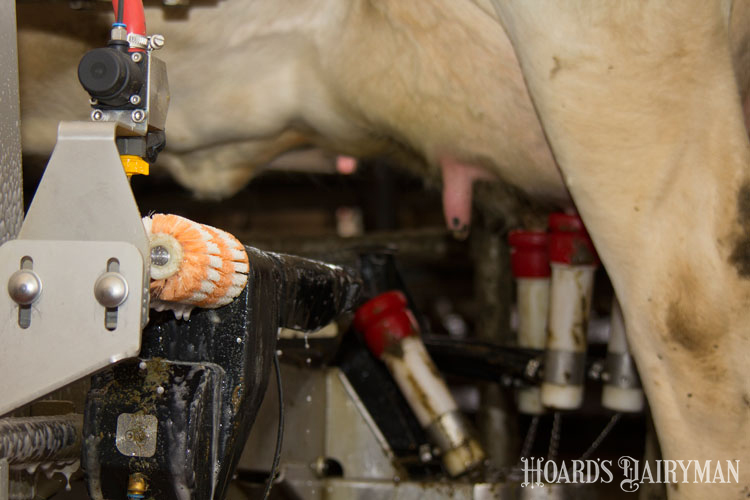
Automated Milking Installations . . . known to most in dairy circles simply as milk robots . . . are in need of some updates. That’s according to a letter issued by Steve Ingham, administrator for the Division of Food and Recreational Safety for Wisconsin’s Department of Agriculture, Trade and Consumer Protection.
“When AMIs (Automated Milking Installations) were first being installed in Wisconsin over 15 years ago, the department had concerns that butterfly valves cannot be adequately cleaned,” wrote Ingham in a November 16 letter to Wisconsin operators of AMIs. “At that time however, clear FDA (Food and Drug Administration) guidance on this issue was not available and the department didn’t want to enforce requirements that were not consistent with requirements in other states.”
That was 15 years ago. FDA, via a memorandum interpreting the Pasteurized Milk Ordinance (PMO) that governs all licensed dairy farms with permits to sell milk in the United States, brought clarity to the butterfly valve issue in 2014.
Memo M-I-14-8 in the PMO indicates “a butterfly valve in a required AMI block-bleed-block valve arrangement must be debited.”
That’s the take on the national level.
In Wisconsin, dairy farm regulations also require:
- All product contact surfaces of equipment to be easily cleanable.
- Product contact surfaces that cannot be cleaned and sanitized by CIP (clean in place) to be readily accessible for disassembly and then cleaned and sanitized either manually or by a clean-out-of-place mechanical process.
What does that mean for the dairy farmer who owns robots or has butterfly valves in his or her milking system?
“ . . . the presence of butterfly valves in all CIP milking systems, including block-bleed-block applications will be marked as a debit unless these valves are manually cleaned each time the milk handling system is cleaned,” wrote Ingham. “If either of the debits mentioned above is marked in consecutive inspections, then the process to suspend a milk producer’s Grade A permit must be started.”
Bottom line?
“The department urges AMI operators to as soon as possible replace butterfly valves with single-seat valves that are air-actuated and CIP-compatible,” concluded Ingham.
While a number of robot dairy farms have successfully operated their dairy farms with these valves for well over a decade, the handwriting is on the wall from FDA. Each butterfly valve must be replaced.
Manufacturers that sell robots are working with dairy farmers to find a solution. Admittedly, some companies that sell robots have been more proactive than others. The valve installations are not cheap and each can reach over $1,500 to $1,800 per valve once installed. However, given the total number of valves and the amount of replumbing and fabrication, it could cost $10,000 to $12,000 for a two-robot dairy with 120 cows.
Since this is a high-cost item at a time of tight cash flow, staff with the Wisconsin Department of Agriculture, Trade and Consumer Protection indicated that a replacement plan could be submitted for those farms that cannot immediately implement the update. Staff will then evaluate the schedule and develop a replacement plan with the dairy farmer.
Some of these valves also exist in conventional milking systems, too. Check with your milking equipment dealer to determine your situation. Be proactive and make the update.








